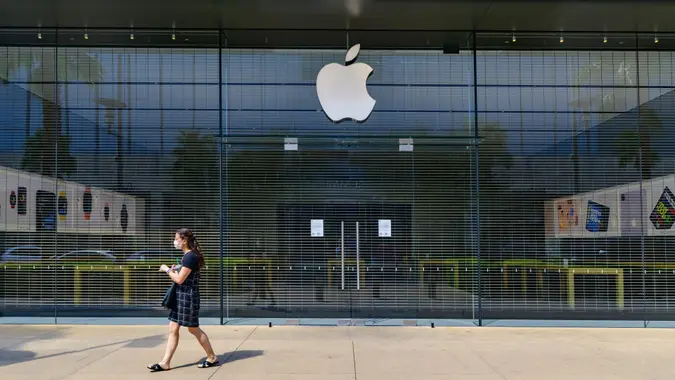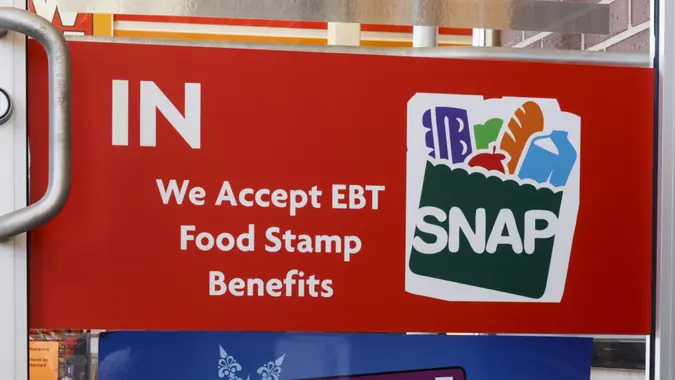UGMA vs. UTMA vs. 529 Plans: Which Education Savings Account is Right for You?

Commitment to Our Readers
GOBankingRates' editorial team is committed to bringing you unbiased reviews and information. We use data-driven methodologies to evaluate financial products and services - our reviews and ratings are not influenced by advertisers. You can read more about our editorial guidelines and our products and services review methodology.

20 Years
Helping You Live Richer

Reviewed
by Experts

Trusted by
Millions of Readers
Raising children means making a lot of decisions. One of the most important is planning for their education. There are different options to help you save and choosing the right type of account matters. You can choose a UTMA or UGMA custodial account, or a 529 plan educational savings account.
Here’s what you need to know to make the right choice.
Overview: UGMA vs. UTMA vs. 529 Plans
Uniform Gifts to Minors Act, or UGMA, and Uniform Transfers to Minors Act, or UTMA, accounts have long been used as ways for parents, grandparents and others to give money to children who have not yet reached the age of 21. These accounts give the custodial — often the parent — control over the money until the minor reaches the age of majority in their state.
A 529 plan is an educational savings account that lets parents save money for their child’s education and to withdraw that money tax-free if it’s used for educational expenses. Both accounts can help families provide for their children, but there are differences.
The following overview highlights some of the key differences between UTMA vs. UGMA vs. 529 plans.
| UTMA/UGMA Account | 529 Plan | |
| Ownership before age 21 | Custodian | Owner |
| Ownership after age 21 | Child | Owner |
| Use of funds | Any purpose | Education |
| Tax benefits | Limited | Tax-free withdrawals |
| Financial aid impact | High | Low |
UTMA/UGMA accounts are custodial accounts designed for use as vehicles to transfer irrevocable gifts of cash, investments or other property to a minor.
What Is a Custodian?
A designated custodian manages the assets until the child reaches a certain age — usually 18 or 21, depending on the state — at which point they receive full control of the funds. UTMA and UGMA accounts offer some tax benefits on investment earnings, with the first portion exempt from federal income tax and the next taxed at the child’s lower rate.
What Are 529 Plans Used For?
529 plans are specifically designed for education savings and offer significant tax advantages. Contributions grow tax-free, and qualified withdrawals for education expenses are not subject to federal or state income taxes, in many cases. Some states even offer additional tax benefits for in-state plan contributions.
While offering more flexibility than traditional savings accounts, 529 plans have narrower investment options compared to UTMA or UGMA accounts. Additionally, withdrawals must be used for qualified education expenses or face penalties and taxes.
Who Can Open and Contribute?
Anyone, including parents, guardians, family members and friends of the family, can open a UTMA or UGMA account or start a 529 plan for a child. None of these accounts restricts who can contribute to the account, either. This means friends and family members can give money for birthdays and other celebrations to help fund the college account.
How Taxes Work
For tax purposes, a 529 plan has an advantage over a UTMA or UGMA account. Your tax priorities are an important consideration when choosing between these types of accounts.
- UTMA and UGMA accounts: These accounts offer some tax benefits on investment income. The IRS considers earnings in a UTMA or UGMA account unearned income, along with dividends and capital gains. Although the first $1,350 in earnings in 2025 is exempt from federal income tax, the next $1,350 is potentially taxed at the child’s lower rate. However, exceeding this threshold results in the earnings being taxed at the custodian’s (likely higher) tax rate.
- 529 plans: These plans offer significant tax advantages. Contributions to a 529 plan grow tax-free, and qualified withdrawals for education expenses are not subject to federal or state income taxes, in many cases. Some states even offer additional tax benefits, and in some cases, a deduction, for in-state plan contributions. However, nonqualified withdrawals — those that are not used for educational expenses — are taxed on earnings and incur a 10% penalty.
What Each Account Covers
A significant difference between UTMA/UGMA accounts and 529 plans is the permitted use of the funds. UTMA or UGMA accounts offer broad flexibility. The funds can be used for any purpose, including education, but also for personal expenses, investments or even starting a business.
Since 529 plans prioritize education savings, qualified withdrawals for tuition, fees, room and board, and even K-12 tuition up to a certain amount are not subject to taxes or penalties. However, nonqualified withdrawals face penalties and taxes on the earnings.
Control and Ownership Rules
The approach to asset control and custodianship differs significantly between the two options. This is because the child owns a UTMA or UGMA account but is the beneficiary of a 529 plan.
- UTMA or UGMA accounts: The custodian manages the assets until the child reaches adulthood, at which point full control transfers to them. This can be advantageous for the responsible management of the assets during the child’s formative years. However, it also means relinquishing control over how the funds are used once the child gains ownership.
- 529 plans: The account owner retains control over investment choices until the child reaches adulthood. This allows for strategic management of the funds with the specific goal of education savings in mind. The owner also has the option to change the beneficiary at any time — even without the beneficiary’s approval.
How Each Impacts Financial Aid
Financial aid eligibility is a crucial consideration when choosing a savings vehicle for your child’s education. Since UTMA or UGMA assets are considered the property of the child, colleges typically include them in their financial aid calculations, potentially reducing the amount of aid a student qualifies for. This is because the financial aid formula assumes a significant portion of these funds can be used toward college expenses, leading to a potentially lower aid package.
529 plans offer a more favorable treatment for financial aid purposes. While the Department of Education still considers them assets, they are typically counted less heavily than UTMA or UGMA accounts. This is because 529 plans are typically owned by the parent or custodian, not the child. Consequently, the financial aid formula assumes a smaller portion of these funds is readily available for college expenses, resulting in a less significant reduction in potential aid.
Which Account Offers More Flexibility?
Flexibility and portability are key considerations depending on your long-term goals. UTMA and UGMA accounts offer greater flexibility in terms of asset ownership and usage. The funds can be used for any purpose, providing more control but potentially sacrificing tax benefits and impacting financial aid.
529 plans offer less flexibility in terms of usage. However, unused funds may be transferred to another beneficiary or may have rollover options to other retirement accounts under certain conditions.
Final Thoughts: How To Choose
To choose between a UTMA or UGMA account or a 529 plan, ask yourself these questions:
- Do you want tax-free growth specifically for education? If so, choose a 529 plan.
- Do you want your child to have control of the funds for any use at age 18 or 21? If so, choose a UTMA/UGMA account.
- Do you want the flexibility to use the funds for any purpose — including but not limited to education? If so, choose a UTMA or UGMA account.
- Do you want to minimize the impact on your financial aid eligibility? If so, choose a 529 plan.
Need help deciding which account is right for your family? Consulting with a financial professional can provide personalized guidance based on your situation and long-term objectives, ensuring you make the most informed decision for your child’s future.
Allison Hache contributed to the reporting for this article.
Our in-house research team and on-site financial experts work together to create content that’s accurate, impartial, and up to date. We fact-check every single statistic, quote and fact using trusted primary resources to make sure the information we provide is correct. You can learn more about GOBankingRates’ processes and standards in our editorial policy.
- Securities and Exchange Commission. 2023. "Updated Investor Bulletin: An Introduction to 529 Plans."
- Charles Schwab. 2024. "Saving for College: Custodial Accounts."
- Fidelity. "Must-know facts about UGMA/UTMA custodial accounts."
- CollegeAdvantage. "Non-Qualified 529 Withdrawals Lead To Tax Penalties."
- Merrill. "What expenses can a 529 education savings account cover?"
- Fidelity. "How unused 529 assets can help with retirement planning."
- Merrill. "Comparing education planning choices to help you determine which is best for you."
 Written by
Written by  Edited by
Edited by 

























